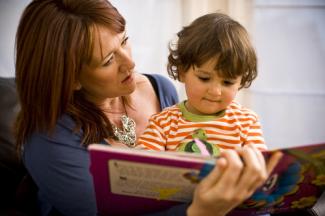Open up a world of chances for your child’s future by teaching them to speak English. People believe that English speakers frequently earn more money, have exposure to the best universities in the world, and have more travel options. Who wouldn’t want that for their child? So parents are eager to teach English to children at home.
Suppose you dedicatedly want to assist your child in learning English. In that case, you’re undoubtedly thinking about getting professional advice, whether in the form of an online English course or a kid-friendly teacher.
However, you may also be pondering as a parent, “What can I do at home to help my child’s English education myself?” This is what the child-focused Preply English tutors had to say when we specifically asked them that question.
Many parents teach English to children at home but are unaware of where to begin. Even if your native English isn’t excellent, it doesn’t matter. The most crucial thing is that you are enthusiastic and encourage and appreciate your kids. Your kids will notice how interested you are in the language. Don’t be concerned if your youngster doesn’t start using English right away. They will want some time to comprehend the language fully. They will eventually start speaking English if you are patient with them.
Tips on How to Teach English to Children at Home

The best way to assess development is through creative expression.
Identifying your child’s current proficiency level and whether you can raise the learning bar is crucial for ensuring that learning English is a continual process. Select a day and time, then encourage your child to write a story or poem or share an intriguing event from the previous week. Even if it has numerous grammatical and spelling errors, encourage them to write it down. Let them express it gently before gradually correcting them.
Creating a routine
Create a schedule for your at-home English study. Short, frequent sessions are preferable to long, infrequent ones. You can entertain these kids only for fifteen minutes. As your child gets older and their attention span lengthens, you can progressively extend the length of the sessions. To keep your child’s interest, keep the activities brief and exciting.
If you have room, you can set up an English area in your home to keep everything relevant to the language, such as books, games, DVDs, or crafts your kids have created. It’s essential to repeat things to kids because they usually need to hear words and phrases several times before they feel ready to use them on their own.
playing games
When kids are having fun, they learn naturally. There are many various games you may play using flashcards, including Memory, Kim’s game, Snap, and Happy Families. Flashcards are a fantastic tool to teach and recall vocabulary.
You can play various other games with your kids to help them practice their English. Action games, such as Simon Says, Charades, and What Time Is It, Mr. Wolf?
Snakes and ladders and other common board games
Play word games like I Spy and Hangman.
Online games – You might play one of the LearnEnglish Kids’ online games to wrap up your English lesson.
Nothing beats watching a great film to learn English.
It should always be interesting to learn. Kids might quickly enter the zone of boredom and switch to another activity to restore their interest. Let them watch a good English movie and connect with the dialogue and plot. Later, request that they role-play specific characters or narrate the story in English using their own words.
Early education in every subject has its benefits. And when appropriately taught, English is a language that is relatively simple to learn. One strategy is to keep things fun and unique. Make it a habit for everyone in the family to speak English. Set aside particular day hours when everyone will only use English when speaking steadily and progressively to encourage your child.
Learning a language can also be a form of physical activity.
Everyone is quite familiar with the game “Simon Says.” It is a test of linguistic proficiency and a measure of how quickly you can comprehend instructions. Ask your child to round up their pals for an evening of Simon Says. Make a little prize announcement for the child who wins the round. This is the best way to teach English to children at home.
Using storytelling
Little ones adore books with vivid colors and appealing graphics. Together, look at the images and speak the words while pointing to the images. In the future, you can instruct your kid to point to various objects by asking, “Where’s the cat?” Eventually, encourage them to speak the words by asking, “What’s that?” Your child will become accustomed to English sounds and rhythms by listening to stories.
Children can improve their reading and listening skills using the animated stories on LearnEnglish Kids. Older kids can finish the accompanying downloaded tasks to gauge their understanding.
Combine their Favorite Games with English Language Snippets
Not all children will be eager to learn English as you would prefer. Therefore, it is ideal for introducing the language into what they currently want to do. If your child enjoys playing Jenga, you may change the rules such that your child must respond to a question before the round can continue. If they like puzzles and riddles, you may intersperse the clues with one-liners that have gaps, or English proverbs and poems, which they must remember and finish to acquire the next one.
You can play a variety of different games with your kids to help them practice their English.
- Action games, including Simon Says, Charades, and What Time Is It Mr. Wolf?
- Snakes and ladders and other common board games
- Play word games like I Spy and Hangman.
- Online games – You might play one of the LearnEnglish Kids’ online games to wrap up your English lesson.
Repetition Can Make Grammar Easier
It might be challenging to teach grammar to young children. Once a child enters a specific grade in school, they start with English grammar lessons. It’s simple to become overwhelmed by the vast level of rules and sentence construction variations. The most incredible method to acquaint kids with grammar is to continue using proper grammar in everyday interactions. Allow them to hear a phrase with proper grammar when they use incorrect grammar so they can decide which sounds better and to utter. Kids can begin to master the proper sentence structure with enough practice in regular use.
Using music
Songs are an excellent method to pick up new vocabulary and perfect your pronunciation. Very young children benefit significantly from songs with actions since they can participate even if they are not yet able to sing along. Actions frequently illustrate the lyrics of the song. This is a fun way to teach English to children at home.
You can listen to various entertaining animated songs with your kids on LearnEnglish Kids.
Grammar instruction
Instead of directly teaching grammar rules to younger children, get them accustomed to hearing and using various grammatical structures in context, such as “have got” while discussing someone’s appearance or “must/mustn’t” when discussing their school regulations. Early exposure to context-based grammar will help your child utilize it correctly and naturally as they age.
You can use LearnEnglish Kids’ grammar practice area for older kids. Thanks to videos, quizzes, and games, kids may learn while having fun and relaxing.
Teaching older kids’ siblings or other family members can be very helpful. You can improve your grammar by teaching someone else how to use it.
Using real-world instances
The benefit of teaching English at home is that you can utilize real-world contexts and objects from your home to practice the language in a comfortable and natural setting. For instance:
- When your child is getting dressed, or you are sorting laundry, bring up the topic of clothing (e.g., “Let’s put on your blue socks,” “It’s Dad’s T-shirt,” etc.).
- Again, when you are helping your child organize their bedroom, practice language for toys and furnishings (e.g., “Let’s put your teddy bear on the bed!” and “Where is the blue car?”).
- When you are cooking or shopping, teach the terminology of food. Give your child a list of things to find when you visit the grocery (use pictures or words depending on their age).
- Once the groceries are at home, review the terminology.
Make the experience entirely realistic.
Once they are in a situation that correctly supports their learning process, children pick things up rapidly. Make the environment productive so that children can begin to understand the nuances of the language everywhere. These could come from phone or in-person talks between you, from consuming media that use formal English, and more.
What phrases and vocabulary should I introduce first?
When selecting topics to educate, consider your child’s hobbies and personality, and let them assist you in making the decision. Consider starting with a few of these subjects:
- numbers (1–10; 10–20; 20–100) (1–10; 10–20; 20–100)
- descriptors for colors (e.g., big, small, tall, happy, sad, tired)
- the body wears toys and animals (e.g., pets, farm animals, wild animals)
- food
- On LearnEnglish Kids, you can find a tonne of entertaining exercises covering a wide range of subjects.
Use the exact stock phrases with your child every time, such as “It’s English time!” to help them become accustomed to the language of “English time.” Let’s take a seat. What song should we play first today? Children will rapidly learn words like “please” and “thank you.” Can I have it? Where is? Point to; What color is it; Can I have it? It’s; I like; I disapprove.
Whatever method you choose, the most crucial thing is to unwind, enjoy yourself, and make learning English pleasurable for both you and your child.
Conclusion
These pointers should have given you some ideas for original ways to educate your child in English at home. If you’d want more direction, taking a few English courses with a child-focused online tutor can serve as motivation for implementing English in your house. With pricing starting at just $5 per hour (with half-hour classes available for young children with short attention spans! ), private tutoring doesn’t have to be costly either.
If you are reading this, you intend to take highly responsible action for your child’s future. Their ability to communicate in English is a unique talent that will help them succeed in the future. Learning a new language is also considerably simpler for kids than for adults. If you start them off early, they will have a high degree of fluency, and speaking English will come naturally to them when they need it.
Recommended Reads:-
- TOP 20 ENGLISH WRITING TIPS FOR BEGINNERS
- TOP LATEST TREND IN TEACHING AND LEARNING ESL
- 12 BEST BOOKS FOR TEACH ENGLISH STUDENTS AT ANY AGE OR SKILL LEVEL
- TOP 12 ENGLISH SPEAKING COURSE ONLINE
FAQs
Ans: One should teach their child English like:
Recognize their capabilities and limitations.
Play everything you can.
Short-duration activities.
Permit a parent to attend the lesson with their child.
Make use of a glove puppet.
Teach just a few words in each lesson.
Sing a bunch of tunes.
Use a lot of pictures.
Ans: Eight entertaining teaching strategies for kids
Make tunes out of teachings.
Make graphic representations of new vocabulary.
Encourage the use of mnemonics to remember grammar rules.
Include conversations that are natural or predictable throughout the course.
Games are an excellent way to break up long study sessions alone.
By acting out vocabulary, you can review it.
Ans: Teaching your children English will improve their memory, critical thinking, problem-solving, and multitasking abilities. Additionally, youngsters who are proficient in other languages exhibit increased creativity and mental flexibility.











This article offers valuable insights on teaching English to children at home. The step-by-step approach and creative activities mentioned here make learning fun and engaging. Parents can definitely benefit from these practical tips to enhance their child’s language skills.
This article provides valuable insights on how to teach English to children at home. The tips and techniques mentioned are practical and engaging, making learning a fun and interactive experience. Parents and educators will find this resource helpful for nurturing language skills in young learners.